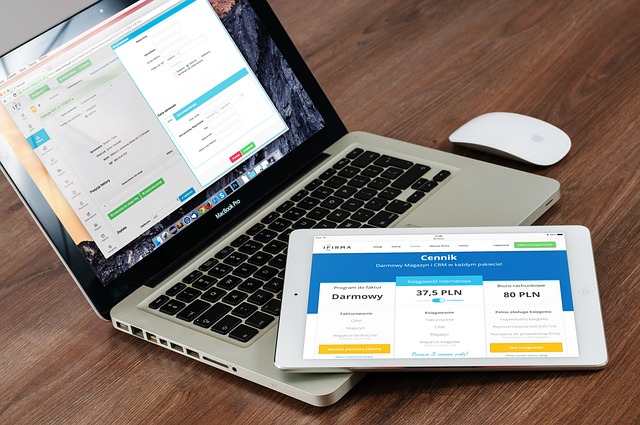Small businesses can transform their online presence through cost-effective website redesign strategies, focusing on usability, mobile optimization, and SEO. By prioritizing these key areas, they can enhance user experience, improve visibility, and attract more visitors without breaking the bank. This involves utilizing affordable design tools, optimizing content for search engines, collaborating with freelancers or agencies, following a structured redesign process, and measuring success through KPIs and user feedback.
Small businesses looking to enhance their online presence need not break the bank with a costly website redesign. This comprehensive guide explores affordable strategies for revamping your digital storefront, covering everything from identifying key areas of improvement to collaborating with cost-effective freelancers or agencies. Learn how to set realistic goals, optimize content, implement essential SEO practices, and launch a successful redesign without sacrificing quality or draining resources.
Understanding the Need for Website Redesign on a Budget

Many small businesses understand that in today’s digital era, having an online presence is crucial for success. However, they often face a significant challenge when it comes to affording a comprehensive Website Redesign. With limited budgets, these businesses may feel stuck with outdated websites that fail to represent their brand or engage their target audience effectively. This can be particularly problematic as customers increasingly judge businesses based on their digital footprint and user experience.
A Website Redesign doesn’t have to break the bank. Smart, strategic changes can significantly improve a small business’s online presence without requiring a substantial financial investment. By focusing on essential elements like usability, mobile responsiveness, and search engine optimization (SEO), businesses can enhance their website’s performance and attract more visitors, all while staying within budget constraints.
Identifying Key Areas for Improvement in Small Business Websites

Small business websites often reflect the limited resources and time available for their creation and maintenance. As a result, they can sometimes feel outdated, clunky, or lack essential features. When considering a website redesign, identifying key areas for improvement is crucial to enhancing user experience and boosting online presence. Start by evaluating the site’s navigation—is it intuitive and easy to follow? A poorly structured navigation can frustrate visitors and drive them away.
Next, assess the visual elements and design aesthetics. Outdated graphics, inconsistent branding, or a layout that doesn’t align with modern design trends can make a website appear unprofessional. Additionally, ensure that the site is optimized for mobile devices, as most users now access the internet through smartphones and tablets. A responsive design that adapts to different screen sizes is essential for a positive user experience across all devices.
Setting Realistic Goals and Expectations for an Affordable Redesign

When considering a website redesign, small business owners must set realistic goals and expectations. This involves understanding that an affordable redesign doesn’t mean sacrificing quality or functionality. Instead, it means prioritizing essential features, maintaining user-friendliness, and employing cost-effective solutions like utilizing existing design elements, optimizing for mobile, and leveraging open-source platforms.
Realistic planning also entails recognizing the time frame required for a successful redesign. Rushing the process can lead to subpar results. By setting clear milestones, defining budget constraints, and maintaining open communication with designers, business owners can ensure an affordable website redesign that meets their needs without breaking the bank.
Exploring Cost-Effective Design Solutions and Tools

Small businesses often have limited budgets, making it a challenge to invest in professional design for their websites and branding. However, there’s good news! Exploring cost-effective design solutions and tools can help transform your online presence without breaking the bank. One of the most accessible options is leveraging user-friendly website builders and templates, which offer customizable designs at affordable prices or even free of charge. These platforms often provide drag-and-drop functionality, making it simple for business owners to create professional-looking websites without coding knowledge.
Additionally, open-source design software and graphic elements are readily available online, allowing entrepreneurs to access high-quality visuals and assets while minimizing expenses. Many communities and forums also share resources and offer tips on finding free or low-cost design services. By embracing these cost-saving strategies, small businesses can embark on a website redesign journey, enhancing their digital footprint and competing effectively in today’s market.
Content Optimization Strategies to Enhance User Experience Without Breaking the Bank

Redesigning your website doesn’t have to be costly to make a significant impact on user experience. Content optimization is a powerful tool that can enhance your site’s performance and keep visitors engaged without breaking the bank. Start by auditing your existing content—remove any outdated or irrelevant information, ensuring what remains is high-quality, concise, and tailored to your target audience.
Utilize keyword research tools to identify search terms your customers use when looking for products or services like yours. Incorporate these keywords naturally into your website’s text, meta descriptions, and headings. This strategy improves search engine rankings and makes your content more discoverable, ultimately driving more traffic to your site.
Implementing Essential SEO Practices for Better Online Visibility

Small businesses looking to revamp their online presence through a website redesign should prioritize implementing essential SEO (Search Engine Optimization) practices. Optimizing your site for search engines is crucial for enhancing your online visibility and attracting potential customers. Start by conducting thorough keyword research to understand what terms your target audience is using when searching for products or services similar to yours. Incorporate these keywords naturally throughout your website’s content, including titles, headings, meta descriptions, and body text.
Additionally, ensure your website is mobile-friendly as the majority of internet users now access sites via smartphones. Google favors mobile-optimized websites in its search rankings, so this simple adjustment can significantly impact your online visibility. Other critical SEO elements include creating high-quality, unique content that provides value to visitors and building quality backlinks from reputable sources. Regularly updating your site with fresh content and earning backlinks through strategic partnerships or guest blogging can help boost your search engine rankings, making your redesigned website more visible and attractive to potential clients.
Collaborating with Freelancers or Agencies: Negotiating Rates and Finding Value

Small businesses often have limited budgets, making it a challenge to afford a complete website redesign. Collaborating with freelancers or design agencies can be a cost-effective solution. Freelancers typically offer competitive rates and can provide unique designs tailored to your business needs. When working with an agency, negotiate packages or specific services to fit your budget. Many agencies are open to flexible pricing models, such as retainer agreements, which can make high-quality redesigns more accessible.
Choosing the right freelancer or agency involves careful consideration. Review their portfolios and client testimonials to gauge their design skills and customer satisfaction. Communicate your vision clearly and ensure they understand your business objectives. This collaboration ensures that the final product aligns with your brand identity while offering significant value for your investment in a website redesign.
Launching Your Redesigned Website: A Step-by-Step Guide

Starting fresh with a redesigned website is an exciting step for any small business owner. The process can seem daunting, but with a structured approach, it becomes achievable and cost-effective. Here’s your step-by-step guide to launching a new online presence:
1. Define Your Goals: Begin by identifying what you want to achieve with the redesign. Is it to improve user experience, increase conversions, or showcase your brand identity? Setting clear goals will guide your design and development process.
2. Choose a Platform: Select a suitable content management system (CMS) like WordPress or Squarespace. These platforms offer affordable hosting and easy-to-use interfaces, allowing you to manage your website without extensive coding knowledge.
3. Select a Theme: Browse through themes that align with your brand aesthetic and business goals. Many CMS platforms provide both free and premium themes, ensuring you can find an option that fits your budget.
4. Plan Your Content: Organize your website’s structure by creating a sitemap. Decide on the pages, features, and functionality you need, such as a blog, contact forms, or e-commerce capabilities.
5. Design and Development: With your theme selected, customize it to match your brand. Add your logo, choose color palettes, and tailor the layout to suit your content. If needed, consider hiring a web developer or using no-code tools for more complex functionalities.
6. Migration and Testing: Once designed, migrate your existing content to the new website. Test thoroughly to ensure all features work as intended across different devices and browsers.
7. Launch and Promote: After a successful test run, launch your redesigned website. Promote it through social media, email campaigns, and other marketing channels to drive traffic and engage your audience.
Measuring Success and Continuous Improvement After Redesign

Measuring success is a vital step in any Website Redesign endeavor, especially for small businesses aiming to make a significant impact with limited resources. Key performance indicators (KPIs) specific to your business goals should be established beforehand. For instance, if the focus is on increasing online sales, tracking conversion rates, average order value, and bounce rate from the redesigned site will provide valuable insights. Regularly analyzing these metrics allows for continuous improvement and ensures the new design effectively serves its intended purpose.
Additionally, gathering user feedback through surveys or analytics tools can offer qualitative data to enhance the Website Redesign process. By understanding user behavior, preferences, and pain points, small businesses can make data-driven adjustments, ensuring a user-friendly experience that encourages engagement and fosters customer loyalty. This iterative approach promotes long-term success and adaptability in a competitive market.
